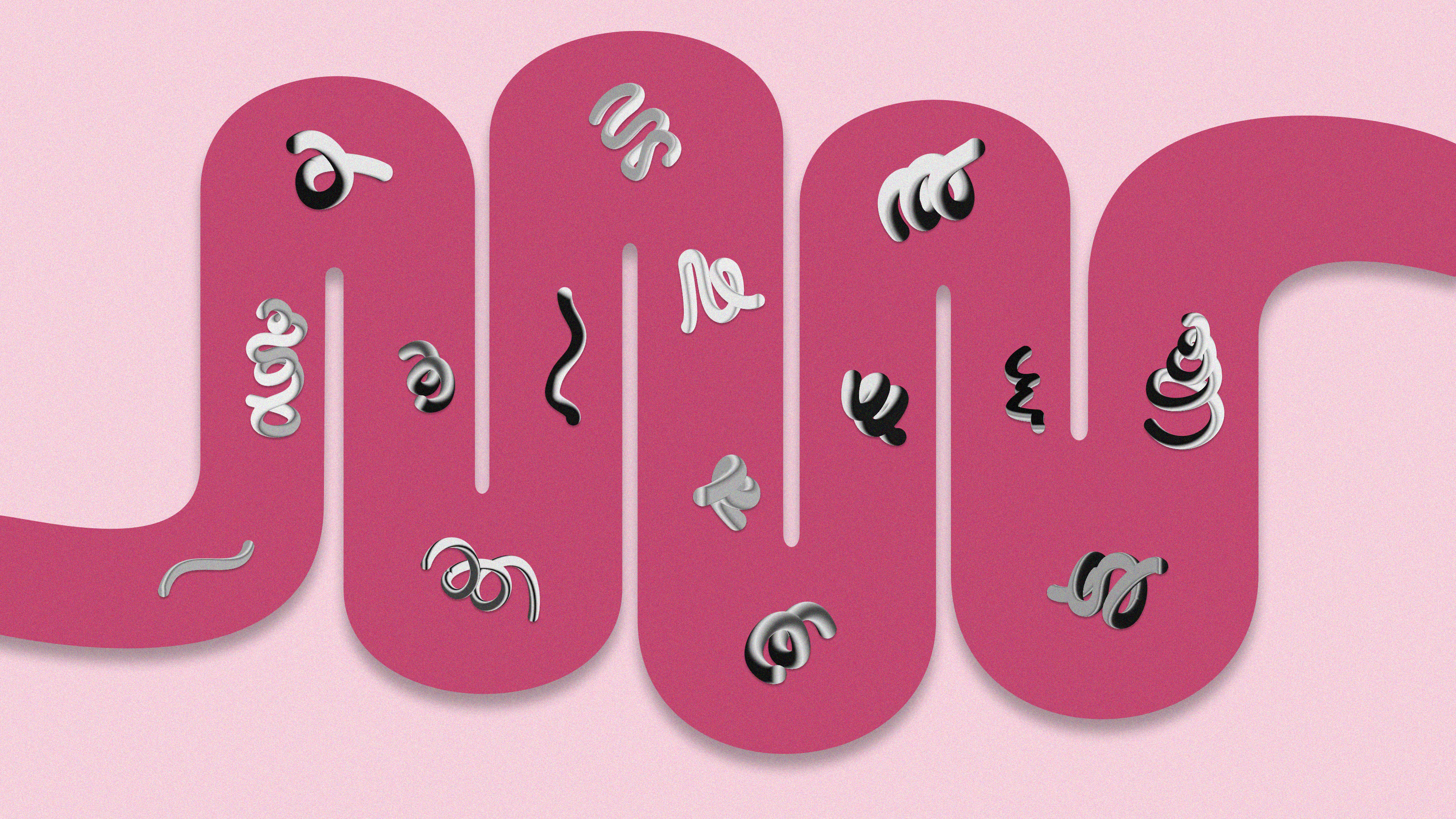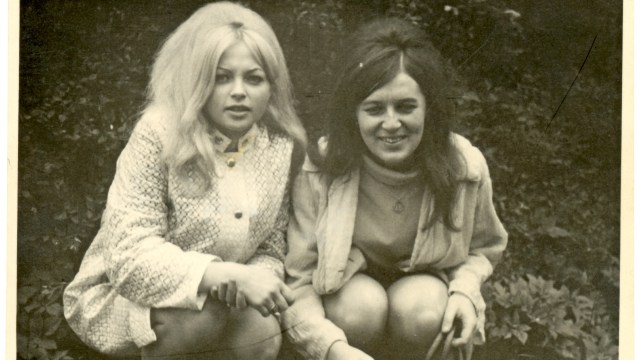America’s health food movement is based on a cult
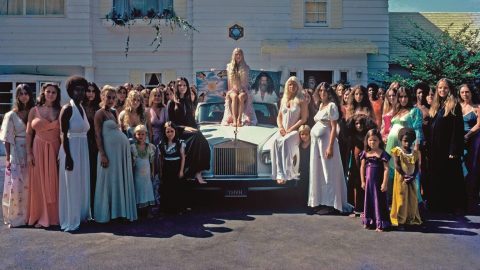
The sun is dipping below the Santa Monica Mountains when Venus Aquarian stands up. She’s resplendent, dressed in royal purple velvet and dripping with crystals, as the dying light catches the halo of white hair framing her face. Next to Venus stands Isis Aquarian, dark eyes and extended arms both pointed to the heavens. Galaxy Aquarian, seated to my right, also rises.
The gentle tremor of a gong washes through the 40 guests seated in a field around a long wooden table strewn with halved papayas, clusters of grapes, and bunches of flowers. Servers in white linen robes glide past with baskets of flatbread accompanied by ivory pyramids of raw cultured butter. The vibe is somewhere between Midsommar and the Sunset Strip, circa 1972.
The Aquarians lift and lower their arms in unison, chanting as they turn to each cardinal direction: “Bless all to the East, YaHoWha! Bless all to the West, YaHoWha! Bless all to the North, YaHoWha! Bless all to the South, YaHoWha!”
Wait, what the hell did I get myself into?
On March 25, 2023, Gastro Obscura and Atlas Obscura threw an event that channeled the free-wheeling spirit of the 1970s. My colleagues here, along with Liz Birnbaum, founder of The Curated Feast, and chef John Harry, orchestrated this extremely surreal gathering, so I’d gotten a sneak peak at what was coming. I’d seen the kitchen prepping a menu containing “Multidimensional Soup,” with the electric-green herb oil swirls; “Utopia Eternal,” a deep violet stuffed cabbage resembling a plated heart; and “Psychedelic Toast,” shingled with purple and fuchsia radishes and cut into triangles to represent the Age of Aquarius.
But nothing had prepared me for the otherworldly ambience. Or an afternoon spent discussing sex magic and the Lemurian astral plane and communing with the dead, as casually as most people discuss traffic. I consider myself something of a skeptic by professional nature. I have never owned a crystal or a tarot deck. Yet when Isis looked straight through me and said, “Dimensions were thin back in the 60s and 70s, as they are now,” I felt a prickle run down my spine.
Isis is an original member of the Source Family, a 1970s utopian commune of roughly 140 hippies who lived in a Georgian-style mansion in Los Feliz known as the Mother House. The group had a penchant for flowing linen robes and chanting rituals, as well as a strictly regimented diet that included daily inhalation of the “sacred herb.”
As a narrator in The Source Family, the 2012 documentary directed by Jodi Wille and Maria Demopoulos, says, “If you wanted to create an archetype of the ultimate early 70s, Southern California spiritual cult, you could do no better than the Source Family.”
Part of the enduring fascination around the Source Family, like other cults of the time period, is that their history is the stuff of American myth-making, full of details far wilder than any tall tale. Members of the Source Family believed they were part of a tradition of “white magic” stretching back to Renaissance times, and changed their middle and last names to “the” and “Aquarian,” in honor of the Age of Aquarius—the current or upcoming astrological period, depending on who you ask.
Then there was the founder, Jim Baker, better known as Father Yod (pronounced “yode”) or YaHoWha, a literal and figurative giant of a man who once declared himself a god. Born on Independence Day 1922, he was a psychedelic rock band frontman, a convicted killer, an alleged bank robber, and a decorated ex-Marine with a predilection for purple Rolls-Royces. Oh, and he had 14 spiritual wives and his fists were registered as lethal weapons.
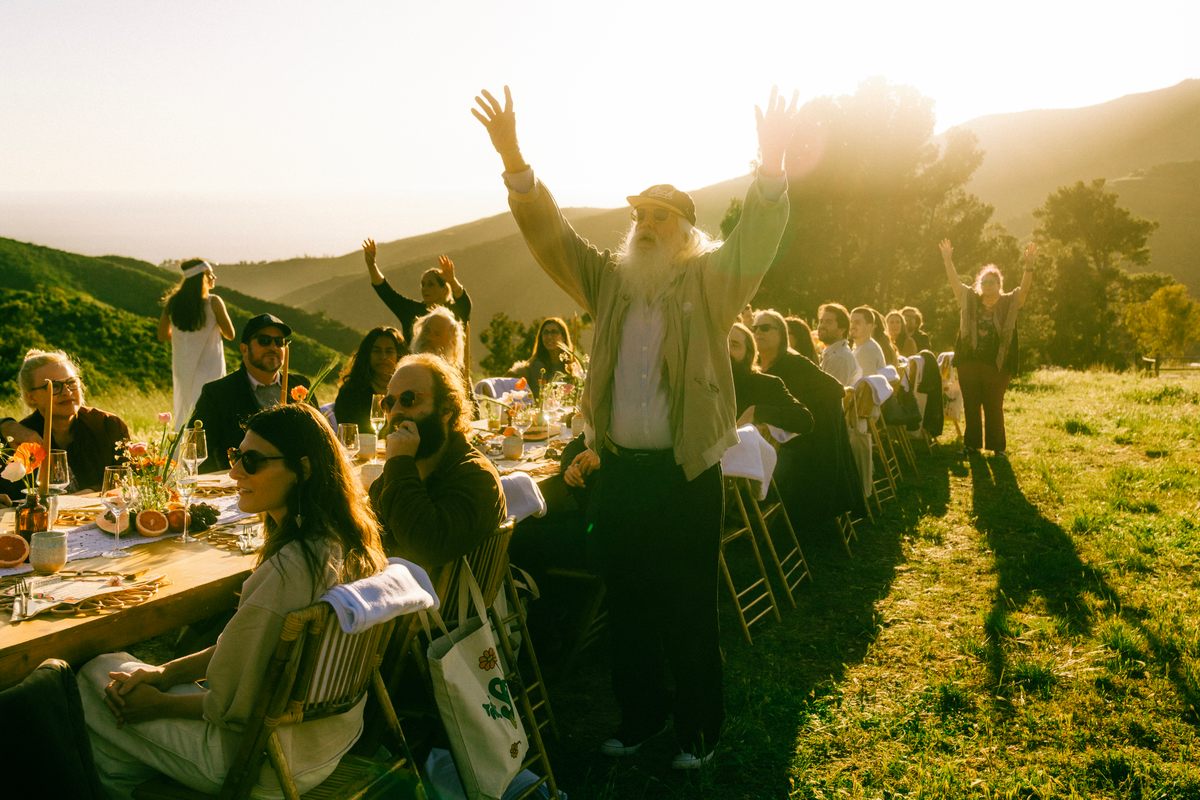
“Day One was biblical being around him,” Zarathustra Aquarian had told me earlier that afternoon. His wife Amy and daughter Alyah stood beside him. To this day, the family lives by the tenets of the Source Family and holds to its belief system, which combines disparate mystical and religious elements ranging from Zen Buddhism to Freemasonry. Unlike some of its 70s cult contemporaries—the Manson family were practically neighbors, after all—most former members of the Source Family still describe it as a transformative, largely positive experience.
The cult/commune is remembered for a number of things, among them their jam band, Ya Ho Wha 13, whose albums are still highly sought-after by collectors of psychedelic rock, but their most enduring legacy is food, including a killer salad dressing. During the early 70s, they operated The Source, on Sunset Boulevard, one of the most influential alternative restaurants in the United States. The premise was simple: straightforward food, totally vegetarian, mostly raw, some “organic,” and all as fresh as possible.
Almost immediately, the joint became a hub for celebrities, movers-and-shakers, and counter-culture types. It famously makes a cameo in Annie Hall, when Woody Allen’s character orders “alfalfa sprouts and mashed yeast,” and everyone from John Lennon to Steve McQueen to Marlon Brando was a regular. Long after its restaurant shuttered, the Source Family and the brand of mysticism it loved continue to have a profound impact on the ways that Americans eat—whether we realize it or not.
“There’s a direct line between health food in L.A. from the 1960s and 70s to what the Source [Family] was doing to the Goop-era clean food movement,” says Jonathan Kauffman, author of Hippie Food. “There’s this idea of food that’s all very fresh, close to raw, very clean, very low-fat, very colorful. But there’s also the idea that through all these supplements and vitamins, you’re boosting your beauty and you’re boosting your performance as a human.”
“There’s a direct line between health food in L.A. from the Source [Family] to the Goop-era clean food movement.”
That manifests in kale salads and juice cleanses and plant-based protein, but also in another cult-ish sect, Silicon Valley, with its obsession with self-optimization through biohacking and intermittent fasting. The Source and restaurants like it are also part of why fresh produce is now more varied and widely available throughout the United States.
For evidence of how cults and religious sects have shaped our diets, look no further than the aisles at Whole Foods. Yogi Tea is a brand founded by Yogi Bhajan, a Sihk Kundalini master and self-proclaimed guru who rose to prominence before the Source Family. That dense sprouted-grain bread? A legacy of Edmond Bordeaux Szekely, who falsely claimed to have unearthed texts in the Vatican archive in which no less than Jesus himself told us how we should eat. The humble graham cracker? A nod to Sylvester Graham, the 19th-century Presbyterian minister obsessed with the idea that whole grains have the power to put an end to masturbation. And when you enjoy a natural wine, thank Rudolf Steiner, an Austrian occultist, supposed clairvoyant, and inventor of biodynamic agriculture in the early 20th century.
The Source Family borrowed from all of the above, while adding a few ingredients of their own. The story of who they were and how their ideology wound up on our plates is, to quote Father Yod, “Far-fucking-out.”
At the tail end of the 1960s, the fabric of traditional American social structures was in flux and the personal life of a man named Jim Baker was in shambles. At 47, he had already lived several lives. He had fought the Nazis in World War II as a U.S. Marine, went to Hollywood to become a stuntman, and made a small fortune from two restaurants, the Aware Inn and the Old World.
He had also developed a taste for serial adultery, leading to his second messy divorce, as well as scuffles with jealous husbands and boyfriends. In the process, he’d killed two men, supposedly with jujitsu chops to the neck—though the second case also involved a bullet to the skull. By the mid-1960s, after a stint in prison for manslaughter, he was a wreck, showing up drunk and high to pillage the cash from his own restaurant’s coffers.
By then, the once wildly successful and widely known restaurateur had lost the Aware Inn to his ex-wife and the Old World to disgruntled investors. Perhaps that is why Jim Baker decided to become someone else entirely.
As Baker hit rock-bottom, he developed a growing interest in the teachings of Manly P. Hall, the founder of the Philosophical Research Society (an esoteric and metaphysical organization that still operates today), and Yogi Bhajan, who was rapidly gaining followers in California. He foreswore alcohol, meditated intensely, and became increasingly obsessed with the concept of personal transformation through diet and exercise.
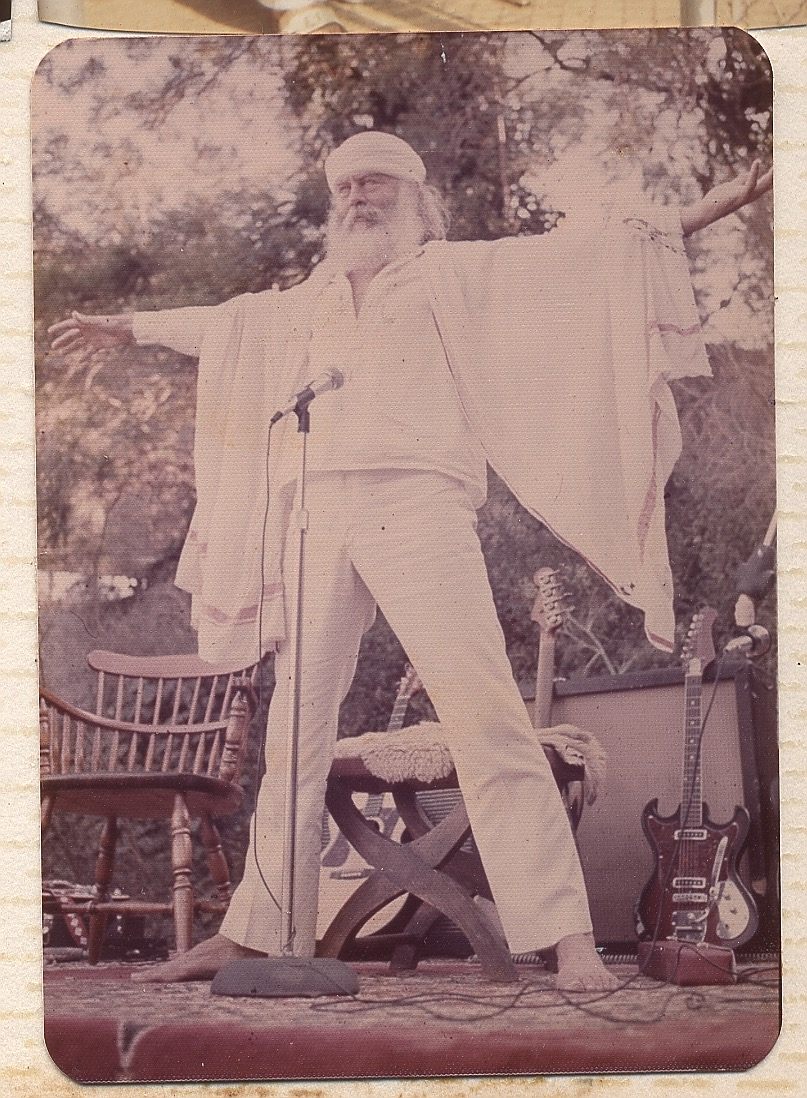
“You have to think of L.A. as a health boom town,” says Kauffman. “Back in the 1880s, as the railway connected L.A. to the rest of the world, people started flocking there because of the warm climate and fresh food. It was this crucible for alternative spiritual traditions. All kinds of health therapies that had been floating around both Europe and America all gravitated to L.A.”
Among the primary strains of what became Southern California’s pastiche of mysticism was the appropriation of Indian and East Asian spiritual traditions, as well as the Eurocentric strain centered around the Naturmenschen, or “Nature Boys.” The latter grew out of a German romantic movement of the 1890s centered around the idea of Lebensreform (life reform), which involved living outside social conventions by foraging, sleeping nude in the woods, and staying vegetarian.
“The Nature Boys were obsessed with California, not just as an actual place, but as an ideal,” says Christina Ward, author of the forthcoming Holy Food: How Cults, Communes, and Religious Movements Influenced What We Eat—An American History. “For German culture California was this utopia-type location, so some of these German health doctors and as well as advocates moved to California.”
“You have to think of L.A. as a health boom town. It was this crucible for alternative spiritual traditions.”
Robert Bootzin, a German-born health food advocate who went by “Gypsy Boots” and adopted a kind of holy fool persona, was the charismatic face of the movement. He made regular appearances on The Steve Allen Show and became friends with Baker.
Meanwhile, Jack LaLanne, the so-called “Godfather of Modern Fitness,” made a fortune on television with his barrel-chested physique and clean-living ethos. “He was the embodiment of physical fitness,” Ward says. “He had a morning exercise routine when I was a kid and you’d see him on Johnny Carson doing an inordinate amount of push-ups.” By some serendipitous twist of fate, Baker and LaLanne had crossed paths during World War II. LaLanne was the physical therapist in the hospital where Baker had once stayed while recovering from wounds.
As Baker reached his personal nadir, the ideals of the Nature Boys and LaLanne’s zeal for rebirth through fitness were all swirling in the Californian sunshine. “There were Gypsy Boots and the Nature Boys, but he took everything from them and applied it with his own knowledge,” Isis says. “He went for a walk and he sat on a log and he had a vision that he was to open up a new restaurant.”
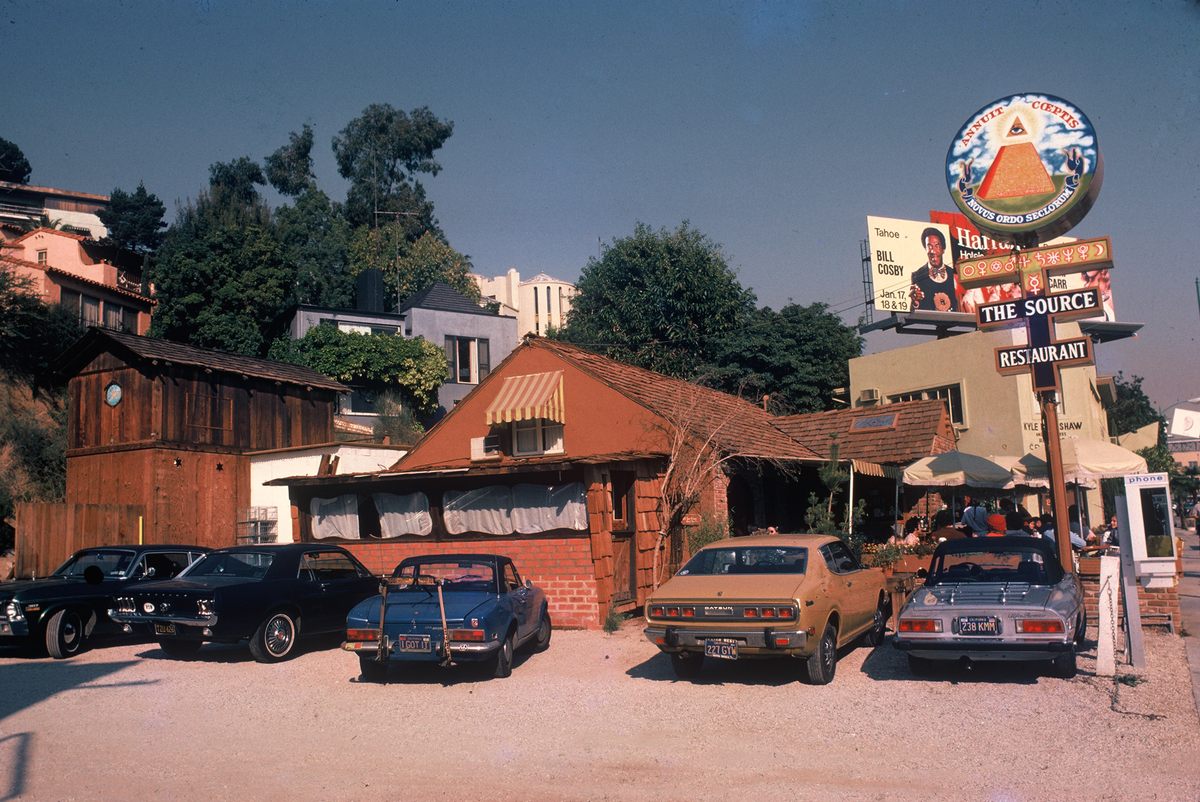
In 1969, after losing his once-successful restaurants, Baker transformed an old hamburger joint on Sunset Strip into the Source restaurant. This new venture quickly eclipsed his other restaurants. To diners today, the menu of salads and veggie sandwiches is unremarkable, but in the 1970s it was revolutionary.
Before long, Baker began attracting young acolytes through the daily public meditation sessions he held at the restaurant. As teenagers, feeling disenfranchised by the war in Vietnam and betrayed by their parents’ generation, left their homes in droves, the Source offered them refuge and an alternative path. They came for the salads and spiritual guidance, and stayed for the cult.
“The culture was about exploring drugs and spirituality as a transgressive break against the culture you were raised in,” Ward says. “Especially if you’ve severed a relationship with your parents, the idea of living in a mansion in Beverly Hills for free [is pretty appealing]. All you have to do is work at the restaurant a little bit, and you’re part of this family that takes care of you, that provides you clothes, food, transportation, everything, and puts it within a framework of collectivized belief.”
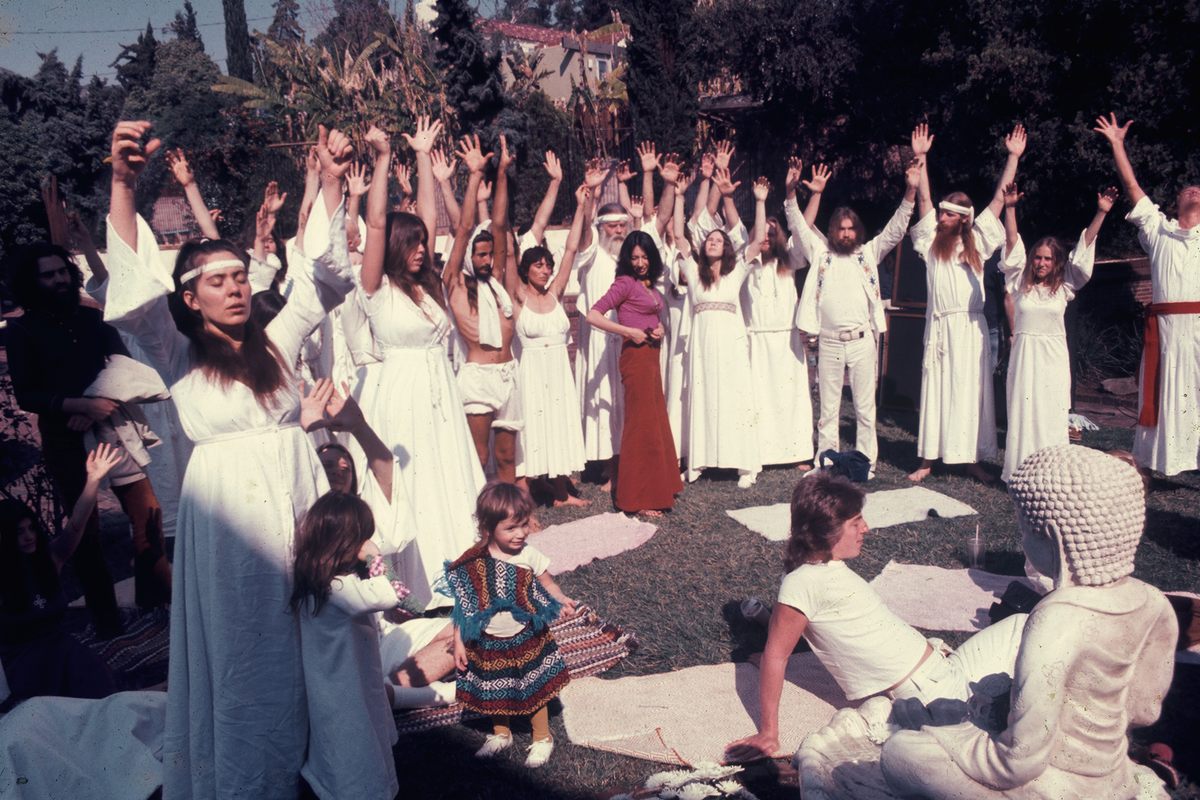
Baker began to call himself as Father Yod, a name given to him by his much younger followers, by then known as the Source Family. “Of course he was the Father—we were so much younger than him,” says Isis, the record-keeper for the commune and one of Baker’s wives.
When Father Yod referred to Jim Baker, it was always as though he was speaking about someone who was no more. “In the third person he would say, ‘I’m no longer Jim Baker,’” Isis remembers. “And he used to laugh at Jim Baker. He loved Jim Baker. He loved telling stories about Jim Baker.”
The Source restaurant was all about vibes. Word spread early on about the unusually attractive young long-hairs who staffed the place, all smiles and flowing hair and white robes. Everyone was in excellent physical shape, thanks to a daily exercise regimen that began with cold-water plunges and what Isis refers to as “Marine training” before dawn, strict abstention from alcohol, and a diet of mostly raw vegetarian food.
“Everybody ate there—everybody,” Isis says. “It was more than the food. It was the food, but it was also the energy and vibration of the waiters and the waitresses. Because we were all family, we all stayed in a certain energy. It’s how the food was bought, how it was cut, how it was handled. It was an energy transference.”
Before she legally changed her name to Isis Aquarian, Charlene Peters was working in a photo studio. Like many people in the entertainment industry at the end of the 1960s, she already knew Baker, who had been something of a man about town for years. She’d heard rumors about his new establishment, and stopped by in search of models.
“I went down to see my old friend Jim. I walked onto the patio and it was no longer Jim,” she says. “He looked like Moses. And that was it. I turned and never looked back. I left everything. I left a fiancé, a photo studio.”
“He looked like Moses. And that was it. I turned and never looked back. I left everything.”
When I asked how the Aquarians came by all of their new names, Zarathustra explained, “We had only one arbiter of decision-making in the Brotherhood of the Source. All of [the names] were chosen by him.” Often, Baker would say he recognized someone from a past life or perhaps had seen a vision of them.
Venus, who was working in theater before joining the cult, initially came for the food. After sleeping through the afternoon, she would head to the Source restaurant for her breakfast, as other customers were having dinner.
“I was up there talking with [Father Yod], getting to know each other, and I swear he was levitating just because the energy around him was just the highest frequency and fabulous,” she recalls. “I went back to my place, and I had been smoking cigarettes for 10 years and never picked up another one after that.” She would become another of Baker’s spiritual wives.
Father Yod’s personal magnetism was undeniable. Recordings of his daily guided meditation sessions marry the zeal of a Baptist preacher’s sermons with the timing of a standup comedian. These freestyle lectures are punctuated by adoring coos, sighs, and occasional utterances of “SHEW!”—an expelling of breath, but also a useful exclamation when the Aquarians were too high or too overcome with emotion for words.
“It was a new energy that was happening,” Isis says. “We were on the cutting edge of something that everybody heard about, everybody knew about. The thing about L.A. is you want in on it at the beginning. You start hearing about something new there. You want to know what’s happening. You want to know what’s going on. That was the thing about the Source.”
The Source Family’s particular path mirrors a number of similar organizations of the time, such as the Love Family in Washington, or the followers of Yogi Bhajan. The Source Family, thankfully, lacks some of the darker elements of other cults of the period, such as the allegations of sexual and physical abuse, or worse.
“[The Source Family] would have been looked on as just a bunch of crazy hippies,” Ward says. “Was it a cult? Was it not? Did they have a guru? Everybody did. So it wasn’t really looked at askance. It was pretty accepted by the general population. Would there have been more conservative people who would be outraged? Of course—there always are.”
By 1974, the restaurant was clearing a cool half million (more than $3 million today) annually, according to a former manager. Venus, the restaurant’s only female chef, describes grinding whole grains and almonds daily. Because the Source Family believed that the life force drained from a fruit or vegetable almost as soon as it was cut, virtually everything was made to order.
It was around the same time chef Alice Waters opened Chez Panisse in Northern California, and for the first time in decades, some Americans weren’t just eating their vegetables, they were paying attention to who grew them.
“We were [one of the first restaurants] supporting the organic growers,” Venus says. “The ones that were really conscious about what food they were producing and making sure that it was of the highest quality, and the amount of money going to them was supporting their efforts also in that field.”
Father Yod had a reputation for a mean cheesecake, as well as ice cream with tupelo honey and raw milk. There was ice-cold watermelon juice, pressed to order, and heaping salads piled with local produce. It was a stark contrast to the bedraggled iceberg lettuce—standard salad fodder at the time, owing to its durability—known to most East Coasters. And for a generation raised on the heavily processed foods touted by the domestic scientists at General Mills, it would have been unusual, if not radical.
“People still talk about it, about how they miss it,” Isis says. “But it was all so simple. It was just fresh and made in ways that you could not get in a restaurant. You couldn’t get salads like that then.”
“It was just fresh and made in ways that you could not get in a restaurant. You couldn’t get salads like that then.”
But neither the broader climate of the early 1970s nor the Source Family were designed for longevity. Divisions began mounting within the commune. Not all members approved of Father Yod’s polygamy, particularly his former wife Robin Popper, known as Ahom within the Source Family, who would later call him a “dirty old man on a lust trip.” The day after Christmas 1974, at the height of the restaurant’s popularity, Father Yod sold it and took his followers to Hawaiʻi.
“He wanted me to go to Hawaiʻi and I refused, so I left the family,” Zarathustra says. “It was not, shall we say, mutual, but there was no other way to do it if I wasn’t going to go to Hawaiʻi.”
Life there was considerably harder than it had been in Los Angeles, as money and resources dwindled. Then, in 1975, Father Yod decided to go hang gliding, unassisted, for the first time in his life. He, perhaps predictably, came crashing to earth, where he lay, injured and refusing medical attention. He died within hours, at the age of 53. Some have speculated that it could have been a kind of suicide, though Ward says, “Given Baker’s personality in life, I don’t think he was trying to kill himself. I think he was just doing what he normally did, which is he leaps before he looks. He did that his entire life.”
The remaining members attempted to keep the Source Family together, but without Father Yod’s gravitational pull and charisma, the family officially parted ways in 1978. In subsequent decades, members scattered, recipes were forgotten, time marched on. But some former members kept their Aquarian names—and kept the spirit of the cult alive. Isis, in particular, has taken on this task. She feels her work with the Source is far from finished, and she saved a trove of records and fading photographs from moldering away in Hawaiʻi’s tropical climate for decades.
“It was my mission,” she says. “I had committed to saving the legacy. I didn’t know when that was going to happen, but everything needed to be saved.” Today, the collection resides in the archives at the University of California, Santa Barbara.
But history is a living, breathing thing, and no volume of film negatives can quite capture it. So, in the spirit of understanding a complicated past—and embracing some of its inherent weirdness—a few former members gathered around a table in the Santa Monica Mountains, feasting on dishes full of sly winks to the restaurant that inspired so many others.
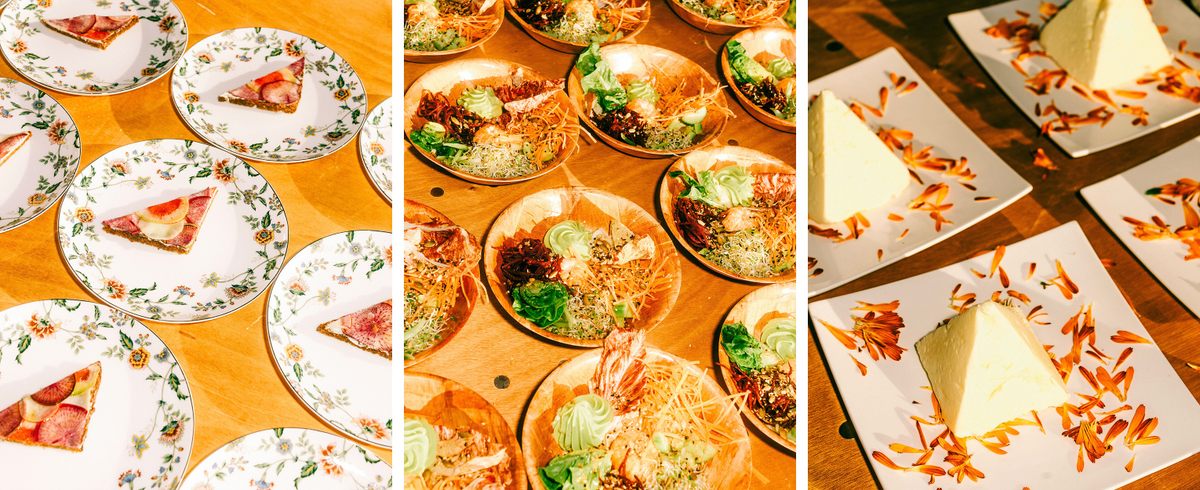
At one point, servers brought out an “Aware Salad,” one of the closest nods to a real staple from the Source’s menu. No one can quite agree for the recipe for that famous salad dressing, but this version includes tahini, a “generous” quantity of honey, and a dash of Bragg’s Apple Cider Vinegar—a product invented by yet another of Father Yod’s inspirations, Paul Bragg, another raw and health food booster whose brand has endured.
The lightly reinterpreted version featured a mix of little gem lettuces, avocado mousse, nasturtium flowers, and alfalfa sprouts, among other leaves and vegetables, all wreathed around a single, whole peeled satsuma. Melanie Reese, the designated storyteller for the evening, said to the guests, “In the center of that dish is an amazing invocation of care and tenderness—when’s the last time someone peeled your tangerine for you?”
It reminded me of something Venus had said to me just a few hours earlier, about how the Aquarians viewed every dish they prepared as an act of intentional generosity and an extension of the Source Family’s spiritual practice: “Everything we learned through our disciplines, we considered sacred.”
And as the light dimmed and a shooting star flitted across the sky, it felt ever-so-briefly as though we had left the present day for the Age of Aquarius. For just a few hours, we glimpsed elements of a tumultuous period in American history and a landmark moment for American cuisine, when social norms were fluid and dimensional veils porous.
This article originally appeared on Atlas Obscura, the definitive guide to the world’s hidden wonder. Sign up for Atlas Obscura’s newsletter.

